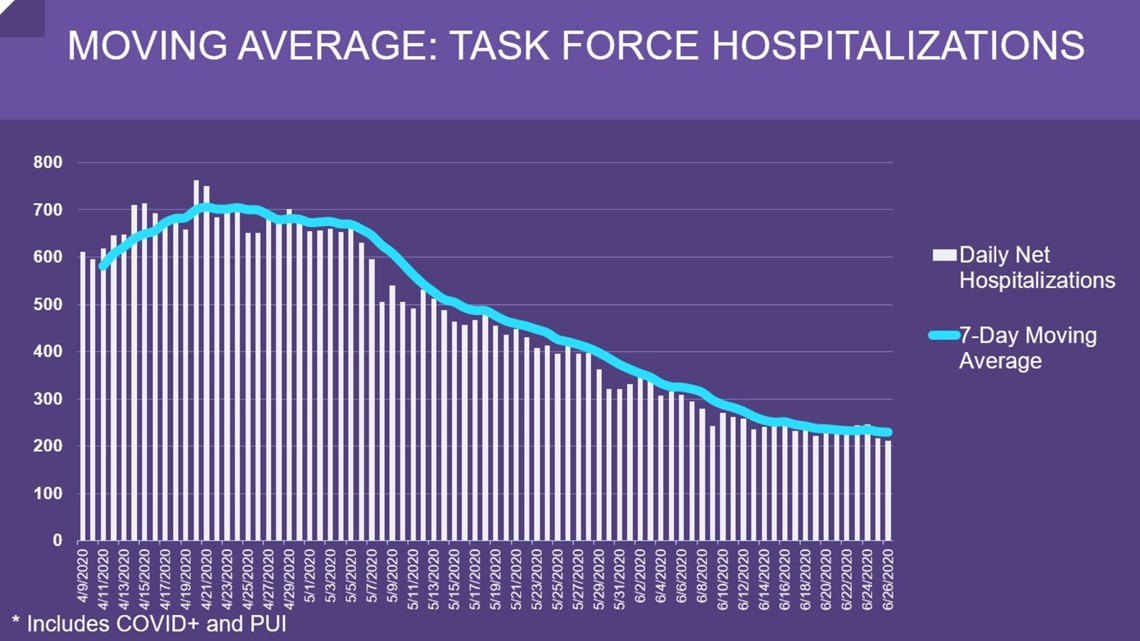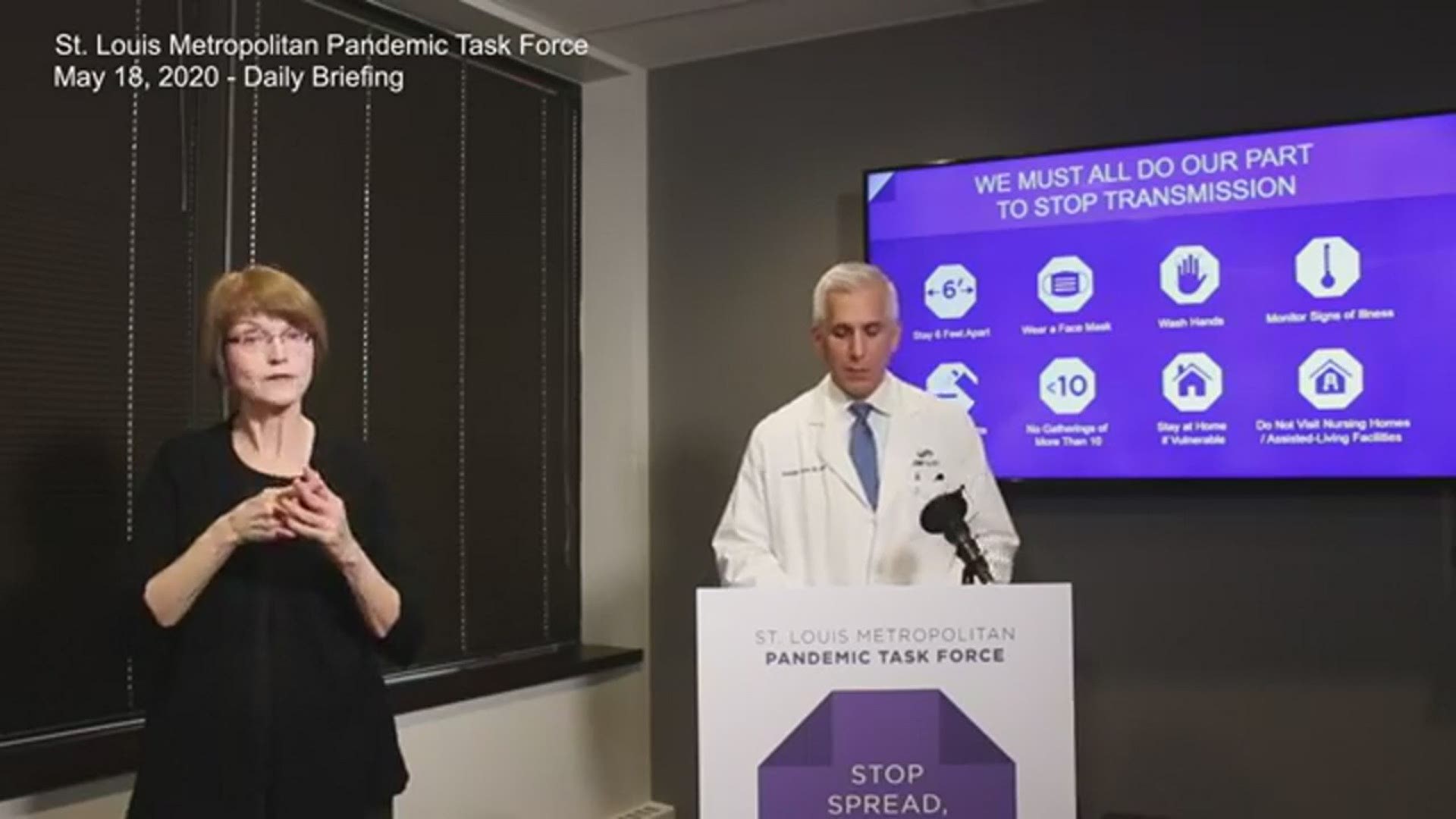ST. LOUIS — Coronavirus numbers in the St. Louis area remain steady as the state reported its second highest increase in new cases Friday.
The Missouri Department of Health and Senior Services reported a total of 19,914 cases, which is an increase of 493 cases.
That is the second highest daily increase since the health department began tracking COVID-19, trailing only Thursday’s record number of new cases.
READ MORE: Missouri reports backlog of tests resulting in single-day record number of new tests, COVID-19 cases
Thursday’s increase was largely attributed to a three-day backlog of test results that came in from private company Quest Diagnostics. The backlog delayed the reporting of both negative and positive tests from the lab, a total of more than 13,000. In all Thursday, the state health department reported a total of 14,624 new tests – a record number for one day in Missouri.
However, on Friday, DHSS reported less than half the number of tests as it did Thursday, but the number of new cases only dropped slightly.
- Thursday: 553 new cases, 14,624 new tests
- Friday: 493 new cases, 6,970 new tests
The large difference between new tests and new cases on Thursday actually led Missouri’s positivity rate to drop. However, the rate increased from 5.68% Thursday to 5.71% Friday. This marks the sixth increase in the positivity rate in the last seven days.
Overall, the positivity rate increased by 1.5% over the last week, from 5.62% last Friday to 5.71% on June 26.
Missouri reporting a total of 19,914 COVID-19 cases Friday and 999 deaths, which is an increase of 10 deaths from Thursday.
In the St. Louis area, the St. Louis Metropolitan Pandemic Task Force reported very slight changes in numbers involving patients at area hospitals.
Still, incident commander Dr. Alex Garza reminded everyone that “we’re really not out of this yet.” He said the St. Louis area – and the U.S. as a whole – are at a delicate point in the pandemic, and he urged everyone to remain focused.
“We don't want our numbers to spike again. We've done a lot of great work over the past months. We've sacrificed a lot and we don't want all of that sacrifice to go to waste,” Dr. Garza said.
He was especially concerned with the Fourth of July holiday coming up next weekend, and the possibility of seeing a lack of social distancing like what happened at the Lake of the Ozarks over the Memorial Day weekend.
“It's a holiday weekend and people like to gather and be outside and stuff like that. And I completely get it. But this is a different year. This is a different holiday season, and we're gonna have to be adaptable to it. And that's unfortunate, but that's the environment that we find ourselves in right now,” he said.
As of right now, Dr. Garza is confident that the spreading of the virus is under control in the St. Louis area.
“We feel pretty confident that we're in a good spot right now. But what that doesn't translate into that we should start relaxing,” Dr. Garza said Friday. “So, we need to continue to do the things that we have done so far to prevent transmission to keep that rate low. So, it's not the time to relax.”
The task force reported decreases in new hospital admissions, total hospitalizations and the seven-day averages for both of those data sets.
The number of total COVID-19 patients in St. Louis area hospitals hit its lowest total yet.


The full breakdown of data trends from the St. Louis Metropolitan Pandemic Task Force is below.
- New hospital admissions: 11, down from 17 Thursday
- Seven-day moving average of new hospital admissions: 17, down from 18 Thursday
- Hospitalizations: 212, down from 216 Thursday
- Seven-day moving average of hospitalizations: 212, down from 231 Thursday
- Patients in the ICU: stayed the same at 49
- Patients on ventilators: 33, up from 25 Thursday
- Patients discharged yesterday: 23, bringing the total to 2,816
For a full county-by-county breakdown of cases in the state, use our interactive map. Some of the local county numbers come from local health departments and may not match data from the DHSS.
Masks, distancing, no large gatherings: 8 steps to stay healthy as cities reopen
Signs of what life was like before the coronavirus pandemic are beginning to make their way around St. Louis and St. Louis County.
But doctors say some of the changes we’ve made in our everyday lives need to stick around, possibly until a vaccine is approved.
“The virus hasn’t left. It hasn’t changed. It’s still here. It’s still very contagious and it’s still very dangerous,” Dr. Alex Garza said Monday. He’s the incident commander of the St. Louis Metropolitan Pandemic Task Force.
For weeks now, Dr. Garza has stressed the importance of social distancing, frequently washing hands and cleaning surfaces. He said as economies and businesses reopen, it’s especially important to continue those practices that helped slow the spread of COVID-19 in the St. Louis area.
“We also know that we’re never going to be at zero transmission until there’s a vaccine. So, we have to learn how to live with the virus and take all those important steps to keep it in check,” Dr. Garza said.
To help keep the coronavirus in check in the St. Louis area, Dr. Garza offered these eight steps to keep yourself, your loved ones and the entire community safe.
- Stay 6 feet apart from others – the exception being those you live with
- Wear a face mask in public
- Wash your hands frequently with soap and water for at least 20 seconds
- Clean surfaces regularly, including phones, counters, light switches – anything that’s touched frequently
- Monitor yourself for signs of illness, contact your doctor if you’re experiencing COVID-19 symptoms
- Don’t gather with more than 10 people
- Stay at home if you’re vulnerable or at high risk of infection
- Don’t visit nursing homes or assisted-living facilities
“These are the steps we all need to make to keep the transmission rate low and to prevent the new surge in cases,” Dr. Garza said.
Latest coronavirus headlines:
- White House coronavirus task force holds first public briefing in nearly 2 months
- If president, Biden would make Americans wear face coverings in public during pandemic
- Florida suspends drinking at bars as COVID-19 cases continue spiking statewide
- Texas bars close again, to slow spread of coronavirus
- 16 NBA players test positive for coronavirus as season restart nears
- US reaches new record for daily confirmed coronavirus cases
- Bubble-free life means MLB players, coaches must be careful over coronavirus


